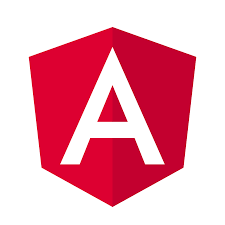
Homesh Nasre
Homesh has 14 years of experience in the IT industry, and he has worked on several front-end development projects. He has expertise in all phases of the software development lifecycle, including requirement gathering, business analysis, design/architecture, development, integration, testing, deployment, configuration and code management, customer support, and maintenance. He has played the role of mentor for various teams in case of technical and non-technical challenges.
- Role
Front End Developer
- Years of Experience
14 years
- Professional Portfolio
View here
Skillsets
- Angular - 6 Years
- JavaScript - 8 Years
Vetted For
- Roles & Skills
- Results
- Details
- Senior Front-End DeveloperAI Screening
- 50%
- Skills assessed :Agile, Angular, Bootstrap, CI and CD, GIT / SVN, HTML / CSS, JavaScript, nginx, Type Script
- Score: 50/100
Professional Summary
- Jun, 2012 - Present13 yr 4 months
Lead Front-end Developer
Persistent Systems Ltd., India. - Jan, 2022 - Jan, 20231 yr
Front End
The Skill Xchange - Apr, 2012 - Jun, 2012 2 months
UI Developer
TEKsystems Inc., India - Aug, 2009 - Oct, 20101 yr 2 months
Web Developer
Supreme Startech Pvt. Ltd., India - Oct, 2010 - Jan, 20121 yr 3 months
Front-end Developer
Alacrity Solution Pvt. Ltd., India - Jan, 2012 - Apr, 2012 3 months
UI Developer
Kizora Pvt. Ltd., India
Applications & Tools Known

WordPress

jQuery

Git

CSS3 & CSS5

Javascript

HTML5

React

Angular

TypeScript
Work History
Lead Front-end Developer
Persistent Systems Ltd., India.- Worked on multiple projects from various domains like Pharma, Finance, Telecom, Big Data,
E-commerce, etc. - Led a team of front-end developers and managed projects of clients from North America, Norway, Australia, and Germany.
- Worked on all phases of the Software Development Life Cycle and followed standard practices during the software development cycle.
- Worked as a point of contact between UI team and clients.
- Followed Agile Scrum methodologies while achieving the final product delivery. Also, have experience in working with waterfall model methodologies.
- Developed web applications using HTML/CSS, JavaScript, jQuery, Angular.
- Converted mockup designs and wireframes to responsive HTML/CSS layout conversion with and without Bootstrap CSS framework.
- Integrated UI with AngularJs, Angular.
Worked on D3, Highchart, GraphJS chart libraries. - Integrated Keycloak with Angular.
- Optimized landing page performance.
- Worked on cross-browser compatibility issues and bug fixes for various web browsers.
- Followed standard code practices and guidelines, and documentations.
- Developed pixel-perfect layouts as per mockup designs.
Front End
The Skill XchangeRoles and Responsibilities :
Writing clean, high-quality, high-performance, maintainable code
Develop and support software including applications, database integration, interfaces, and new functionality enhancements
Coordinate cross-functionally to insure project meets business objectives and compliance standards
Support test and deployment of new products and features
Participate in code reviews.
You will build next gen UI using latest technologies: ES6, Angular 7+, SASS and HTML5 and will play an integral part in the design, development & delivery of new features, providing strong technical and delivery leadership and input into proposed solutions.
Requirements :
Required Senior profile with leadership qualities
4+ years of relevant work experience
Excellent hands-on experience with Angular 7+ and ES6
Good proficiency in HTML5 and SASS
Experience in Azure and Azure Devops is a good to have
Experience with Agile or Scrum software development methodologies
Ability to multi-task, organize, and prioritize work
UI Developer
TEKsystems Inc., India- Worked as a developer on a contract basis.
- Converted wireframes and web design to dynamic HTML/CSS layout.
- Followed standard code practices and guidelines, and documentation.
- Delivered project within the provided timeline.
UI Developer
Kizora Pvt. Ltd., India- Worked on Norway-based Restaurant Website and chrome browser plugin development.
- Developed a responsive website with CSS3 and jQuery animations.
- Used media query for responsive layout without Bootstrap.
- Created theme for WordPress website.
Worked on cross-browser compatibility issues and bug fixes for various web browsers.
Front-end Developer
Alacrity Solution Pvt. Ltd., India- Worked on multiple e-commerce websites template development.
- Worked on Photoshop to remove product image background using the pen tool in
Photoshop and to add reflections under product. - Worked on slicing of PSDs and converted them into pixel-perfect HTML/CSS layouts.
- Fixed cross-browser compatibility issues include IE6.
Web Developer
Supreme Startech Pvt. Ltd., India- Worked on an ERP application.
- Developed web application UI using HTML/CSS, JavaScript, jQuery.
- Integrated UI with .NET back-end.
- Designed and Develop websites using Photoshop, HTML/CSS, and jQuery.
Testimonial
Major Projects
Luprolink
- LuproLink is a web application to manage drug inventory and shipment of drugs to clinics and hospitals.
- Worked as a Lead Front-end Developer.
- Worked on UI enhancements and bug fixes.
- Integrated Keycloak with Angular 11 to improve application security.
Commscope - Quareo
- Quareo is a network management station (NMS) based web application to manage and monitor network devices.
- It provides a rich user interface to virtually manage network and network devices.
- Worked as a UI developer.
- Worked on UI enhancement and cross-browser issues fixing.
- Created catalog templates for network assets.
Motorola Mobility Catalog
- The Motorola Mobility Catalog is a web portal designed to manage the sales of mobile devices and accessories for web stores.
- Worked as a UI Developer.
- Created responsive HTML/CSS templates based on mockup designs.
Integrated UI template with AngularJs application. - Fixed browser compatibility issues (Chrome, IE7+, Safari, Mozilla).
Harmonic- SM
- Harmonics is a web application to manage video processing hardware.
- Users can manage the conversion of raw video to different video formats before the telecast.
- Worked as a UI Developer.
- Improved existing User Interface for better performance.
- Developed HTML/CSS pages as per mockups.
- Fixed existing browser compatibility issues.
Baker Hughes - FastOil
- FastOil is a web application portal to manage the well drilling process for oil companies.
- Designed & Developed GUI for a web application.
- Integrated UI with JSP pages.
- Fixed cross-browser issues.
Education
Bachelor of Engineering in Electronics and Telecom
G. H. Raisoni, MaharashtraDiploma in Electronics and Telecom
Shri Datta Meghe Polytechnic, MaharashtraX
Pandit Bachharaj Vyas Vidyalaya, Maharashtra
Certifications
Linux
Redhat
Interests
AI-interview Questions & Answers
Yeah. So my name is Himesh and, uh, I have been working as a front end developer for last, um, 13 years, Mostly, my hands on experience is on HTML, CSS, JavaScript, Angular, React, and, uh, other libraries like jQuery, Bootstrap, SASS, CSS, Delwin. In my current organization, I'm working on A project called the Skillix, which is built on Angular eight. This is a b two b platform For the construction industry and, uh, where contractors can post the Tenders for construction sites and there may be there there there will be tradies who can trade on those Tenders. So this is the system we built on that. So we, uh, We use Angular as a front end in that. And, uh, in back end, there is a Golang we use And MongoDB for DBs. And for authentication purpose, we are using Azure AD. So this is the techno technology stack we use. And, uh, apart from that, I'm actually in this project, I was leading a team of 8 people, Including tester, angular developer, uh, back end developer, mobile developer. So
What step would you take to ensure high performance of this policy? Angular prediction. K. So to ensure the performance and responsiveness Of Angular application, I'll use first, I will check the Angular application. I will test it properly and very well it is lagging. I will try to Check the components, uh, performance. Each components I will try to disconnect those modules from the application so that, uh, I can get the exact issue where which model is, uh, creating this, uh, performance issues Or I will use NG trace or other libraries from Angular to trace the issues. Responsiveness, uh, wise, uh, there there is a browser stack tool online. So I will check the responsiveness on that site Here, I can check for multiple devices, uh, so that I can get where the application is not responsive properly. So based on that, uh, test results, I will update the front end of this. Update that view of the Angular components and yeah. I'll fix the CSS
So TypeScript features wise, uh, yeah, we we write the code with, uh, whenever we are declaring any variables, we are adding a type on that. So it is it is good practice to add that thing. Because in JavaScript, there is nothing like that. Can just use, uh, var and rate or const without any, uh, type mentioned for the variables. But here in TypeScript, they it is providing that feature to restrict the variables so that no one can enter no one can will make, uh, like, if there is a variable called, uh, string variable, uh, it should not assigned with other values which is not string. So, we can restrict and we can secure or coding with this practice. And Yeah. No. There are multiple features like in e s 6, which e s 6 provide, uh, as a part of TypeScript that we can use here so that we can create a secured enterprise application. In Angular Angular in Angular, it is actually based on TypeScript. So we generally create a model and all, uh, whenever we are, uh, working with the forms and so that users should not enter any other data except the relevant data which is required for that form. So, yeah, that is what we focus while
So it should return 15 as we are passing 5 and 10 as a string, but we are assigned, uh, the type of those, uh, params as a number And, uh, return value, uh, return value is also number for that method, for that function added. So it should return 15 in this case. It should return 15. Yep. So TypeScript will consider this string as a number just because we are specifying that of 1st and second parameter is a number.
So, generally, I used to connect with the junior, uh, just to know What are their skill sets and, uh, in which area they are doing well and which, Once that I do while coding, uh, I I generally actually 1st time I If I am assigning some tasks to them, I just check some basic tasks with them, how they perform, where they are good enough. So, Uh, first, I identify their exact, uh, coding style and where they are good at. And then I actually assign the task to them. And if there is a need of any improvement in their code, I actually guide them, uh, so that they can follow that, uh, standard practices. And, uh, yeah. Uh, they can help with, uh, help me in the
Yeah. While, uh, doing this object oriented programming while working on this oops concept, I used the solid principle. Single method, solid principle we use everywhere is while working on these complex projects is because, uh, it is a proven method where, uh, which is developed by Uncle Blob, I guess. And, to create a proper object oriented programming, we should follow these principles. So, uh, I follow that solid principle every time. And. You like each company as a stand for single responsibility, always, uh, just open, uh, for, doing this the class should be open for any updates and for not able to record it? So, actually, these are the principles, which is standard principles we use, uh, to create a proper, oops, proper project with
There should there is no errors in such. We are just adding click me as a template. So Either we can add some HTML in the template part, but, uh, there is no need of actually adding any HTML tags. This plain text, uh, will also work. So it should not throw any errors. And apart from that, If we we are using Angular Material, so I'm not able to understand the question where, uh, what exactly angular material feature we are expecting in this piece of code. Consider following. So in this case, we are not using any Angular Material. It's a simple component class.
Describe it. I'm not able to identify any issues in this. This is the in this unit, We have function, and we're just, uh, trying to get So in expect statement, brackets may be the issue, but I'm Not clear. Um, so, otherwise, the function which we are using to solve, which is which is using reduce to get the array, uh, array and using reduce function to Get the single value out of it, which will return single value as 5. So initial value here for you as same as a 0. So it should work properly. There should not be an issue Except this bracket thing in the except, If you see the line, uh, number 4 so I just Bracket, except that it should complete after 2
Uh, how would you handle crashes with the NGINX NGINX input step load? NGINX and bootstrap load, and NGINX is the server. And bootstrap level to CSS library. So how it will create issues? I didn't, uh, face any even single kind of issues. But if suppose NGINX not is not allowing, um, bootstrap library to load, that time it can create a bootstrap library issues. So we should provide proper permissions on Nginx configurations so that it should not create any bootstrap, Layout issues, and it should allow CSS or JS files, which Bootstrap is expecting while, loading the HTML while, uh, rendering the HTML. So that may be the case. Otherwise, NGINX is will not be responsible for bootstrap created layout. It should only, uh, it should be configured properly so that all the UI files should load properly. It should not Allow, uh, restrict any of these, uh, bookshelf details, uh, URLs, fonts, Fonts or related files or any any anything any references which Bootstrap, Oh.
So, uh, I will use So I I use Jenkins, Azure, uh-huh, Both. But we are mostly I worked on Jenkins so I will I will go for Jenkins and Where I will configure to be automated builds with, uh, some scripts and all. I will link it link with that, with the Jira hooks, uh, Jira hooks. And, also, we'll configure all the commits hook With that, uh, this git GitHub works on that Jira platform. So by Doing all this configuration, we can create this CICD thing, but same thing is achievable from on Zoom DevOps Platform. I'm not, uh, I didn't get the chance to confirm that thing. But, yeah, that is possible with the layouts as well. But I guess, Jenkins this, um, Jenkins and Azure DevOps Both are powerful platforms, so we can go on any of them. But as I worked on Jenkins, I can only mention the things